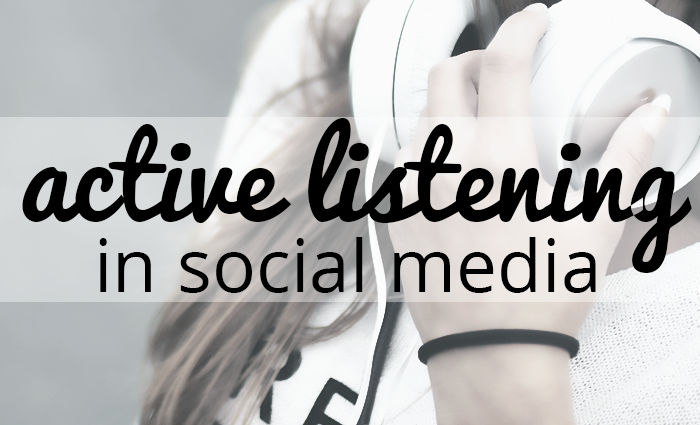
Active Listening in Social Media
Active listening is a communication technique in which the listener demonstrates to the speaker that they have been heard. Though it is often considered a more traditional concept of business communication, the technique is equally effective when applied to communication on social media channels.
Here’s a quick summary of the four key components of ‘traditional’ active listening:
Acknowledgement: using verbal and nonverbal gestures that demonstrate the listener’s attentiveness. Perception from the customer is heavily influenced by the attentiveness of the listener – make them feel valued!
Clarification: summarizing and paraphrasing what the speaker has said. It is important for there to be a correct mutual understanding, particularly when assisting a customer.
Self-disclosure: communicating one’s personal thoughts and feelings. Doing so can build and enhance a customer relationship.
Congruency: maintaining a consistent message through all channels of communication. An example of this is using acknowledgement without clarification, which negatively impacts the user experience.
Businesses who have implemented this technique into their customer service training have observed three noticeable results (Source). When company representatives listened effectively, customers overall:
had a higher level of trust
had a higher level of satisfaction
perceived a higher quality of service

How can we translate and incorporate this technique of active listening into our social media strategy?
Always respond to all feedback and mentions on social media, whether it is positive or negative. Providing customers with an immediate offer of service will do wonders for your brand image and customer retention, even if they approached you with a complaint.
Ensure both you and your customers are on the same wavelength. Particularly when communicating electronically, many things may be lost in translation. Don’t be afraid to paraphrase their question, but in a way that isn’t condescending.
Get personal! Customers hate receiving canned responses on social media as much as they hate pre-recorded responses when trying to place a phone call. Social media representatives should respond as they naturally would.
Create and enforce guidelines and standards for your social media team to follow. Customers are especially more attuned to the treatment of other customers on the internet. Ensure every customer query is followed through appropriately.

Incorporate active listening as a part of your social strategy today. It’s worked for traditional business models, particularly in front-end service with Canadian banks. Is active listening more difficult to achieve face to face than it is on social? Tell me your thoughts!





